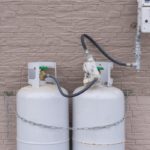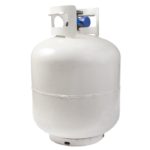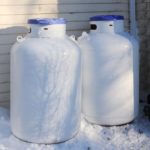Propane is an incredibly versatile fuel that can be used for a wide range of things. You can use a propane tank to run spa and pool heaters, insect traps, portable generators, deck and patio heaters, barbecue grills, and even outdoor fire pits and fireplaces. But do you know how to store a propane tank properly and safely?
You shouldn’t lay small, portable propane tanks on their side because it can cause the relief valve to malfunction. Instead, you should transport, store, and use them in a vertical, upright position. Laying them on their side can release propane, posing a serious threat to your safety.
It’s important to understand and take all the right safety measures when handling propane tanks so that you can host your next barbecue party without worrying about your guests’ safety. Let’s look at the ramifications of storing and transporting a propane tank on its side and the steps you should take for its safe transport. That way you have all the information you need about storing the fuel tank on its side.
Is It Safe to Use a Propane Tank On Its Side?
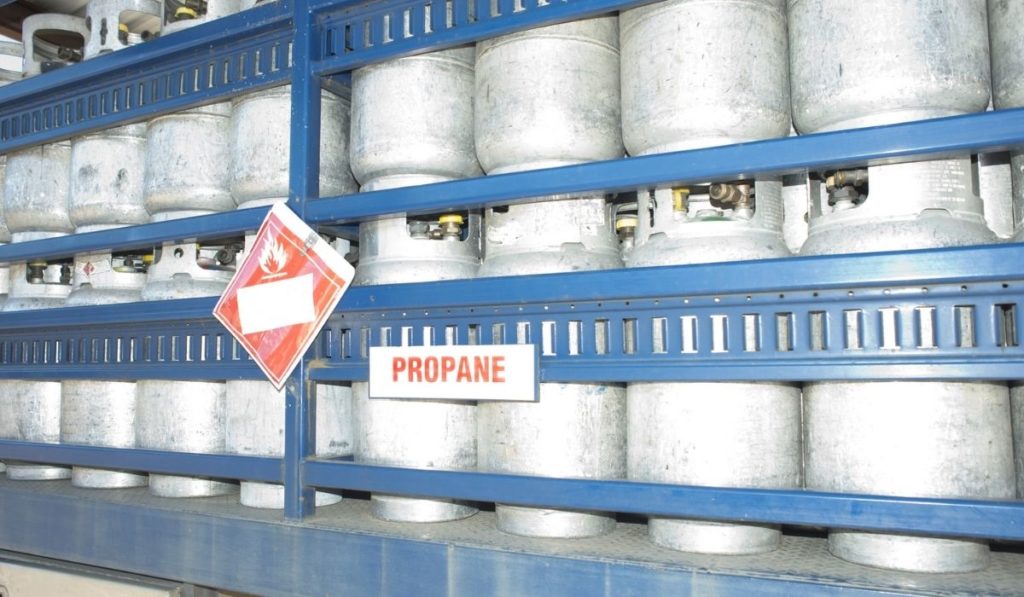
Never use a propane tank on its side. If you’re using a small, portable tank like this option from Coleman (on Amazon) to power your gas grill or any other propane appliance, make sure you keep it straight and upright at all times.
It is safe to use hundred-gallon propane tanks that provide fuel to your entire house on their side, but remember to never store smaller ones horizontally.
Larger tanks that are used on forklifts are specially modified, allowing you to use them on their side. They’re designed with a dip tube that enables liquid withdrawal. They also have a marking on their base that indicates which side should be facing up.
However, small, portable propane tanks withdraw gas off the top, instead of liquid. If you lay them on the side, you’ll withdraw liquid, which can result in a fire or even an explosion.
Can You Store a Propane Tank On Its Side?
You should never store a propane tank on its side because it can release liquid propane and other combustible vapors. This can be especially dangerous if your propane tank is stored near an open flame, as it can result in damage to your property, or even worse, your life.
If you don’t store your propane tank in an upright position, its relief valve might be submerged in liquid propane. A sudden increase in the tank’s pressure will then render the relief valve useless and might lead to catastrophic results.
Can You Transport a Propane Tank On Its Side?
You should never transport a propane tank on its side. Make sure you always transport a tank in the vertical or upright position.
The pressure inside a propane tank is extremely sensitive and must be considered at all times. If you transport the cylinder on its side, it might roll around and damage the structural integrity of the tank, changing the pressure of the gas inside it.
Transporting the tank on its side might also move the pressure relief valve to the bottom, submerging it in liquid propane. This can be extremely dangerous, as the gas’s pressure will remain unchecked.
If you’re planning on transporting propane tanks by laying them down, make sure you attach suitable support devices to prevent them from rolling. It’s also not advised to keep them in the passenger compartment of your vehicle. A bungee cord like this one (on Amazon) is a super simple way to secure a tank.
Why is it Important to Properly Transport Propane Tanks?
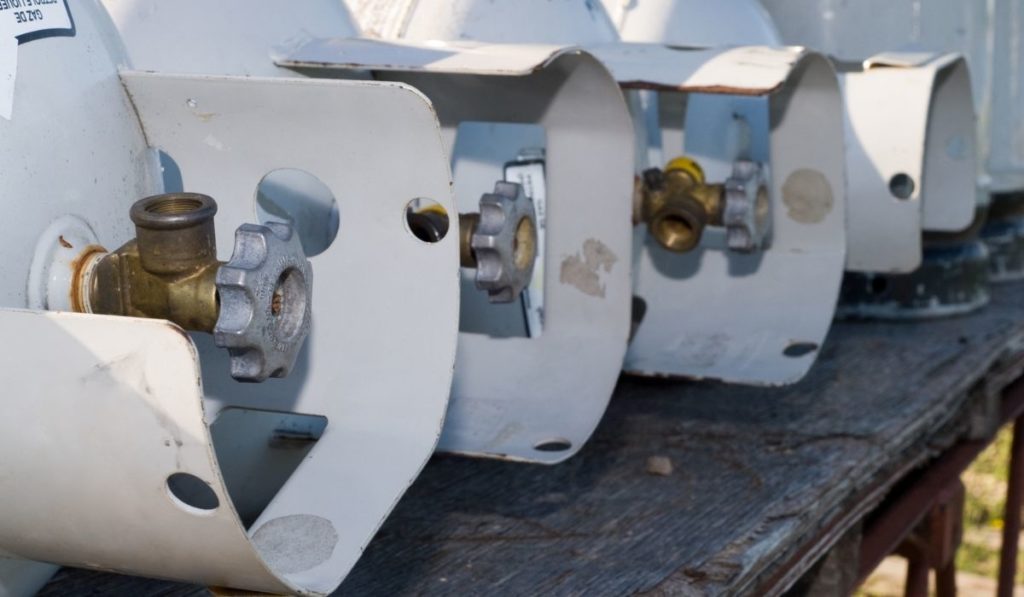
It’s important to properly store and transport propane tanks. That way, they don’t release liquid propane or any other flammable gasses. You should transport propane tanks in the upright, vertical position.
It’s essential to lock the tank into a specific position during transportation so that the pressure relief valve does not come into contact with liquid propane. If you transport the tank on its side, it might roll around and move the pressure relief valve to the bottom, submerging it in the liquid.
The best way to transport a propane tank is with a durable propane tank stabilizer and holder. Holders like this model (on Amazon) fit around the tank and lock into its foot ring, keeping it safe and secure.
Most people use a milk crate as the tank holder because they’re sturdy and keep the tank in the upright position. You can use a crate, but make sure you secure the tank with twine, rope, or a ratchet strap as well. It’s also better to have a good anchor point in your vehicle.
You can transport a maximum of 1000 pounds of propane in an open pickup trailer or truck. However, it’s advised to ask someone for help when loading heavier propane cylinders. A 100-pound propane tank can approximately weigh up to 180 pounds, so make sure you ask a friend to help you secure it safely.
Once you’ve successfully loaded the propane tanks to the back of your truck, locate the anchor points. Use rope, twine, or any other tie-downs to firmly secure the tank at the base, at the top, and near the foot ring to hold it in a vertical, upright position. If you don’t want to tie knots, feel free to use ratchet straps and other suitable tie-downs.
Make sure you don’t transport more than four propane tanks in an SUV or sedan at one time. Each tank should have less than 45 pounds of propane, and the total weight of all the tanks should not be more than 90 pounds.




